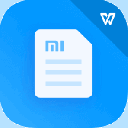


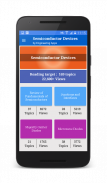

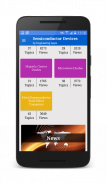
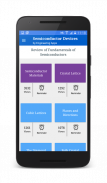
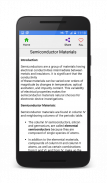

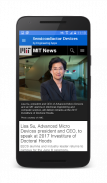
Advanced SemiconductorDevices1

Advanced SemiconductorDevices1의 설명
This ultimate free application is for all engineering students across the world. It covers 169 topics of Advance Semiconductor Devices in detail. These 169 topics are divided in 5 units.
Each topic is around 600 words and is complete with diagrams, equations and other forms of graphical representations along with simple text explaining the concept in detail.
This USP of this application is "ultra-portability". Students can access the content on-the-go from anywhere they like.
Basically, each topic is like a detailed flash card and will make the lives of students simpler and easier.
Some of topics Covered in this application are:
1. The Haynes-Shockley Experiment
2. Semiconductor Materials
3. Crystal Lattice
4. Cubic Lattices
5. Planes and Directions
6. The Diamond Lattice
7. Bulk Crystal Growth
8. Growth of Single Crystal Ingots
9. Wafers
10. Epitaxial growth
11. Vapor-phase epitaxy
12. Molecular beam epitaxy
13. Charge Carriers in Semiconductors
14. Effective Mass
15. Intrinsic Material
16. Extrinsic Material
17. Electrons and Holes in Quantum Wells
18. The Fermi Level
19. Compensation and Space Charge Neutrality
20. Drift and Resistance
21. Optical absorption
22. Photoluminescence
23. Electroluminescence
24. Carrier Lifetime and Photoconductivity
25. Direct Recombination of Electrons and Holes
26. Indirect Recombination; Trapping
27. Steady State Carrier Generation; Quasi-Fermi Levels
28. Photoconductive Devices
29. Diffusion Processes
30. Diffusion and Drift of Carriers: Built-in Fields
31. Diffusion and Recombination; The Continuity Equation
32. Steady State Carrier Injection: Diffusion Length
33. Gradients in the Quasi-Fermi Levels
34. Temperature Dependence of Carrier Concentrations
35. Effects of Temperature and Doping on Mobility
36. High-Field Effects
37. The Hall Effect
38. Fabrication of p-n Junctions: Thermal oxidation
39. Diffusion of P-N junction
40. Rapid Thermal Processing
41. Ion Implantation
42. Chemical Vapor Deposition (CVD)
43. Photolithography
44. Etching
45. Metallization
46. Equilibrium Conditions
47. Equilibrium Fermi Levels
48. Space Charge at a Junction
49. Forward- and Reverse-Biased Junctions
50. Carrier Injection
51. Reverse Bias
52. Reverse-Bias Breakdown
53. Zener Breakdown
54. Avalanche Breakdown
55. Rectifiers
56. The Breakdown Diode
57. Transient and A-C Conditions
58. Reverse Recovery Transient
59. The Ideal Diode Model
60. Effects of Contact Potential on Carrier Injection
61. Switching Diodes
62. Capacitance of p-n junctions
63. Recombination and Generation in the Transition Region
64. Ohmic Losses
65. Graded Junctions
66. Metal semiconductor junctions: schottky barriers
67. Current Transport Processes
68. Thermionic-Emission Theory
69. Diffusion Theory
70. Thermionic-Emission-Diffusion Theory
71. Rectifying Contacts
72. Tunneling Current
73. Minority-Carrier Injection
74. MIS Tunnel Diode
75. Measurement of Barrier Height
76. Activation-Energy Measurement
77. Photoelectric Measurement
78. Ohmic Contacts
79. Typical Schottky Barriers
80. Heterojunctions
81. Tunnel Diodes
82. Construction of Tunnel Diodes
83. The Backward Diode
84. MIM tunnel diode
85. Structure of resonant-tunneling diode
86. I-V characteristics of resonant-tunneling diode
87. Photodiodes
88. The Varactor Diode
89. Current and Voltage in an Illuminated Junction
90. Solar Cell- Working Principle
91. Solar Cell- I-V Characterstics
92. Photodetectors
93. Gain, Bandwidth, and Signal-to-Noise Ratio of photodetector
94. Light Emitting Diodes
95. Light Emitting Materials
96. Fiber-Optic Communications
97. Semiconductor lasers
98. Population Inversion at a Junction
99. Emission Spectra for p-n Junction Lasers
All topics are not listed because of character limitations set by the Play Store.이 궁극의 무료 응용 프로그램은 전세계 모든 엔지니어링 학생들을위한 것입니다. 그것은 세부 사항 사전 반도체 소자의 169 주제를 다룹니다. 이 169 주제는 5 단위로 분할된다.
각 주제는 약 600 단어이고 상세하게 개념을 설명하는 간단한 텍스트와 함께 다이어그램, 방정식과 그래픽 표현의 다른 형태의 완전하다.
이 응용 프로그램의이 USP는 "매우 이식성"입니다. 학생들은 어디서나 그들이 원하는에서 온 이동 콘텐츠에 액세스 할 수 있습니다.
기본적으로, 각 항목에 대한 자세한 플래시 카드처럼 학생들의 생활을 간단하고 쉽게 할 것이다.
이 응용 프로그램에서 다루는 내용의 일부는 다음과 같습니다 :
1. 헤인즈 - 쇼클리 실험
2. 반도체 재료
3. 크리스탈 격자
4. 입방 격자
5. 비행기와 방향
6. 다이아몬드 격자
7. 벌크 결정 성장
8. 단결정 잉곳의 성장
9. 웨이퍼
10. 에피 택셜 성장
11. 기상법
12. 분자 빔 에피 택시
13. 반도체의 전하 캐리어
14. 유효 질량
15. 내장 재료
16. 외부의 재질
17. 양자 우물에서 전자와 정공
18. 페르미 레벨
19. 보상 및 공간 충전 중립
20. 드리프트와 저항
21. 광 흡수
22. 광 발광
23. 전계
24. 캐리어 수명 및 광전
25. 전자와 정공의 직접 재조합
26. 간접 재조합; 트래핑
27. 정상 상태 캐리어 발생; 준 페르미 레벨
28. 광전 장치
29. 확산 과정
30. 캐리어의 확산 및 드리프트 : 내장 필드
31. 확산 및 재조합; 연속 방정식
32. 정상 상태 캐리어 주입 : 확산 길이
33. 준 페르미 레벨에서 그라데이션
34. 캐리어 농도의 온도 의존성
35. 이동성에 대한 온도 및 도핑의 효과
36. 하이 필드 효과
37. 홀 효과
38. P-N 접합의 제작 : 열 산화
39. P-N 접합의 확산
40. 급속 열 처리
41. 이온 주입
42. 화학 기상 증착 (CVD)
43. 석판 술
44. 에칭
45. 금속 화
46. 평형 조건
47. 평형 페르미 레벨
48. 정크 션에서 공간 전하
49. 정방향 및 역방향 바이어스 드 접합
50. 캐리어 주입
51. 역방향 바이어스
52. 역 바이어스 고장
53. 제너 고장
54. 눈사태 고장
55. 정류기
56. 고장 다이오드
57. 과도 및 A-C 조건
58. 복구 과도에게 반전
59. 아이디얼 다이오드 모델
60. 캐리어 주입에 연락 잠재력에 미치는 영향
61. 스위칭 다이오드
62. P-N 접합의 정전 용량
63. 전환 지역의 재조합 및 생성
64. 저항 손실
65. 등급 접합
66. 금속 반도체 접합 : 쇼트 키 장벽
67. 현재 전송 프로세스
68. 열전자 방출 이론
69. 확산 이론
70. 열전자 방출 확산 이론
71. 정류 연락처
72. 터널링 전류
73. 소수 민족 캐리어 주입
74. MIS 터널 다이오드
75. 장벽 높이의 측정
76. 활성화 에너지 측정
77. 광전 측정
78. 옴 연락처
79. 일반적인 쇼트 키 장벽
80. 이종
81. 터널 다이오드
82. 터널 다이오드의 건설
83. 뒤로 다이오드
84. MIM 터널 다이오드
85. 공진 터널링 다이오드의 구조
86. 공진 터널링 다이오드의 I-V 특성
87. 다이오드
88. 버 랙터 다이오드
89. 조명 정크 션의 전류 및 전압
90. 태양 전지 - 작동 원리
91. 태양 전지-I-V 보임
92. 광 검출기
93. 광 검출기의 이득, 대역폭, 및 신호 대 잡음비
94. 발광 다이오드
95. 발광 재료
96. 광섬유 통신
97. 반도체 레이저
98. 정크 션에서 인구 반전
99. pn 접합의 레이저에 대한 방출 스펙트럼
모든 주제 때문에 플레이 스토어에 의해 설정된 문자 제한으로 나열되지 않습니다.
















